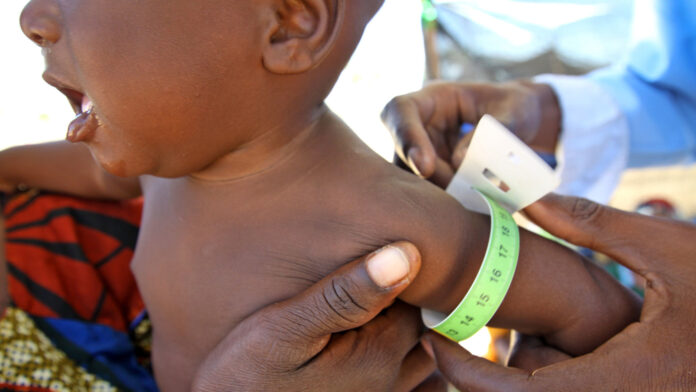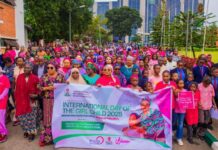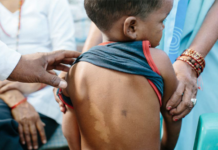Peace Itong
Nigeria has overtaken India as world capital for under-five deaths.
UNICEF, in the report titled “Levels and Trends in Child Mortality”, said Nigeria recorded an estimated average of 858,000 under-five deaths in 2019 as against India which ranked second with 824,000 deaths out of 5.2 million under-five deaths globally.
The report, which covered a period of three decades–1990 to 2019–added that 49 percent of all under-five deaths in 2019 occurred in just five countries: Nigeria, India, Pakistan, the Democratic Republic of the Congo and Ethiopia.
“Nigeria and India alone account for almost a third,” it said.
India has at least six times the population of Nigeria.
School Resumption:Stakeholders panic, express concern
The report said under-five mortality rates have declined by almost 60 percent since 1990. However, the UN expressed concerns that “the potential of a mortality crisis in 2020 threatens years of remarkable improvement in child and adolescent survival”.
“While the extent and severity of the mortality impact of COVID-19 on children and youth is still unknown, the potential of a mortality crisis in 2020 threatens years of remarkable improvement in child and adolescent survival from 1990 to 2019, the period covered in this report,” it read.
“The global under-five mortality rate declined by almost 60 per cent from 93 deaths per 1,000 live births in 1990 to 38 deaths in 2019. Meanwhile, mortality among adolescents aged 10–19 fell from 13 deaths per 1,000 adolescents aged 10 in 1990 to 8 deaths in 2019—a 39 per cent decrease.
“Even with that progress, some 5.2 million children died before reaching their fifth birthday in 2019 alone. Tragically, many of those children died of preventable or treatable conditions.”
According to the data in the report, Nigeria recorded 209,000 neonatal deaths in 1990– a 61,000 increase compared to 270,000 deaths in 2019.
The figures for number of deaths among children aged five to fourteen also increased from 104,000 in 1990 to 119,000 in 2019.
Nigeria’s population has doubled since 1990, which means the percentage of neonatal deaths in the country has reduced, but the absolute numbers are higher.
The report added that while the pandemic has limited direct impact on child mortality, countries worldwide are now experiencing disruptions in child and maternal health services due to resource constraints and a general uneasiness with using health services due to a fear of contracting COVID-19.
“While current evidence indicates the direct impact of COVID-19 on child and youth mortality is limited, indirect effects stemming from strained and under-resourced health systems; limitations on care-seeking and preventative measures like vaccination and nutrition supplements; socioeconomic strain on parents and households resulting from job loss or economic downturns; and stress to children and parents associated with abrupt societal shifts may be substantial and widespread, ” it read.
Henrietta Fore, UNICEF director, said: “The global community has come too far towards eliminating preventable child deaths to allow the COVID-19 pandemic to stop us in our tracks.
UNICEF said: “If the child survival targets are to be met on time, resources and policy must be geared toward not only sustaining current rates of decline but also accelerating progress, which would save millions of lives. If the trends from 2010 to 2019 continue, 53 countries will not meet the SDG target on under-five mortality on time—if all countries were to meet that target, 11 million under-five deaths would be averted from 2020 to 2030.
“Achieving the child survival goals and heading off a reversal of progress in child survival in 2020 will require universal access to effective, high-quality and affordable care and the continued, safe provision of life-saving interventions for women, children, and young people.
“If all countries reach the SDG child survival targets by 2030, 11 million lives under age 5 will be saved—more than half of them in sub-Saharan
Africa.”
Meanwhile the UN Inter-agency Group for Child Mortality Estimation, (UN IGME) 2020 report has advised that attention should be given to the region of sub-Sahara Africa, where mortality rates are highest across all ages and where population increase continues. According to the report, the region is projected to see 446 million births from 2020-2030, and the under-five population is expected to increase to roughly 199 million by 2030 from 168 million in 2019. “Without a quickening in the pace of neonatal mortality decline, the increase in births could lead to further stagnation or even an increase in the burden of neonatal deaths. The rapid growth in births and population requires increased investments in high-impact maternal, newborn and child survival interventions as well as strengthening the health system that deliver them.
“The numbers in the report should serve as a reminder that even in the face of great threats to child health and survival, progress is possible , but that progress can also be lost without the continued, determined, and cooperative action of the global community”.
















